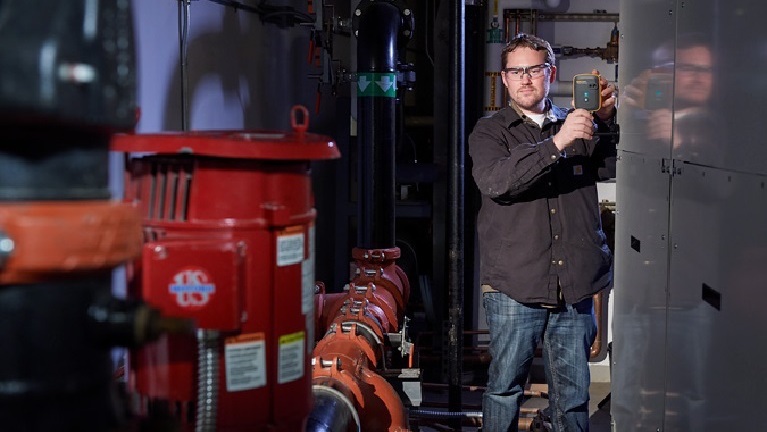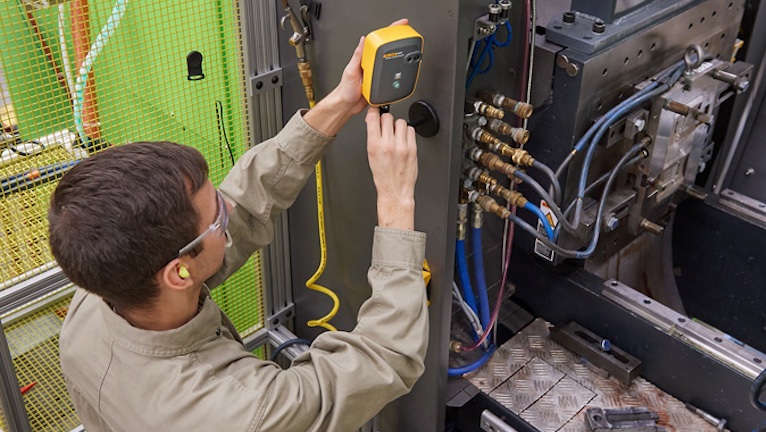The manufacturing workforce skills gap
Manufacturing continues to be a cornerstone in modern society. It plays a crucial role in today’s economy, contributing to nationwide financial gains, the job market, national security and innovations in technology. Smart manufacturing [the Industrial Internet of Things (IIoT), robotics, automation, etc.] has transformed the manufacturing landscape, making it more competitive by increasing productivity and efficiency on the factory and plant floors.
Manufacturers who embrace and apply advanced manufacturing technology in their facilities are proven to be yield more profitable and sustainable work environments. However, there is a shortage of workers in the manufacturing sector, largely resulting from a mass exodus of retiring employees who aren’t being replaced by a highly experienced and skilled younger workforce.
Additionally, manufacturers and plant managers are finding it increasingly difficult to not only attract new workers with the needed skill set to fill available jobs, but also to retain them. This shortage is only expected to grow with time.
“Technology that is based in data collection and reliability will help bridge the gap and keep operations going.”
Manufacturing workers are currently taking buyouts and quitting at the highest rate in more than a decade, according to Fluke Corporation Education Marketing Manager, Toffee Coleman.
“Data from the Bureau of Labor Statistics geints a potentially dismal picture,” Coleman said. “Since June 2016, close to 194,000 factory workers chose to resign, while a comparatively smaller number of 29,000 retired. In either case, older generations are exiting the workforce, and they must be replaced by equally trained individuals.”
Employment gains are already sluggish, and fewer people are dedicating their careers to manufacturing.
“The older generation of workers who know how to build mechanical systems from scratch are leaving the manufacturing workforce and being replaced by millennials with a more generalized skill set,” Coleman said. “Relaying industrial knowledge about machinery from the graying workforce is a challenge.”
Furthermore, teams are facing an accelerating change in the midst of the decades-long shift toward automation in factories and plants, adding to the growing list of current and future problems resulting from the skills gap.
That’s where Fluke comes in.
As a leader in the manufacture, distribution and service of electronic test tools and software, Fluke developed modules to address this issue and work toward closing the manufacturing workforce skills gap by offering solutions the younger workforce has a better understanding of and embraces — mobile technology.
Younger workers often have a higher tolerance for change and ambiguity, and bring skills and competencies for innovative technologies and a collaborative spirit to the factory floor.
“While their skill sets don’t always match the stalwart mechanical aptitude or experience, this newer generation relies on an inherent internet savviness and the ability to embrace disparate software programs and mobile apps,” Coleman said. “These traits position the workforce to embrace wireless measurement tools, workflow management, and condition monitoring software that makes the IIoT more tangible to professionals.”
So, what solution has Fluke offered to combat this skills gap? Enter Fluke Accelix.
The Accelix system connects handheld tools, semi-fixed wireless sensors, SCADA data and any other third-party data in one system that is accessible from any connected device. This new technology provides younger workers the flexibility they’re familiar with and allows them to conduct their work with the same technology they have a deep understanding of, including cloud-based apps, data analysis and computerized maintenance management software (CMMS).

“Those new to the manufacturing and the industrial world enter at a time when the maintenance tool market is shifting away from the solo-fixer mentality to a more team-oriented, condition-based maintenance approach that includes inspection routes for determining equipment health and more screening checks, as well as monitoring of key indicator data,” Coleman said.
The shift will proved newcomers with the assistance and knowledge as older workers exit the industry. While this change doesn’t eliminate the need for experienced professionals to train and mentor the greener group technology will make the process smoother.
“As the workforce grays and retirements rise, institutional and equipment knowledge can go out the door. Losing this knowledge is of paramount concern,” Coleman said. “This new technology will continue to gather data, thereby helping to maintain equipment and operations as the older, soon-to-exit experts help train the younger generation without slowing down the facility.”
Safety-critical sectors are experiencing the greatest need for a bridge in the manufacturing workforce skills gap because the prevention of failures and accidents is crucial in these areas.
“A nuclear power plant cannot afford even the hint of failure or problem-prone equipment, and the assets on an offshore oil rig cannot fail,” Coleman said. “The time required to receive replacement parts/equipment could cripple production. The discrete and process manufacturing industries are already focused on reliability, and they both have great need for this technology to aid its workforce.”
Food and beverage, along with pharmaceutical organizations, could also benefit from these technologies. Technology that is based in data collection and reliability will help bridge the gap and keep operations going while new personnel in these sectors are trained by the exiting generation.
For more information on Accelix, visit accelix-com-staging.yj75z9g0-liquidwebsites.com.






